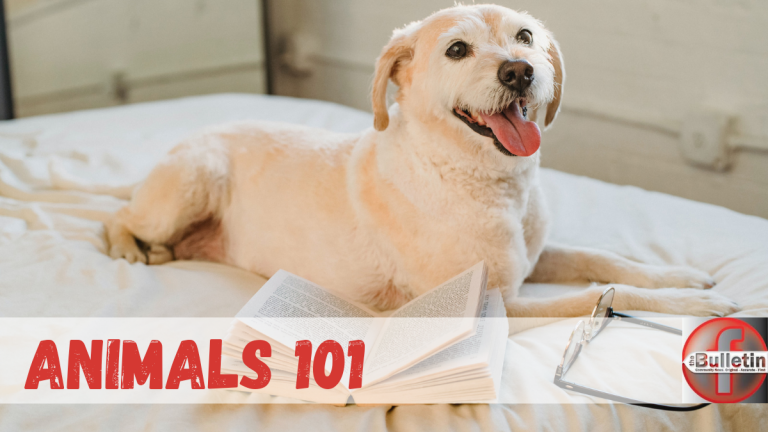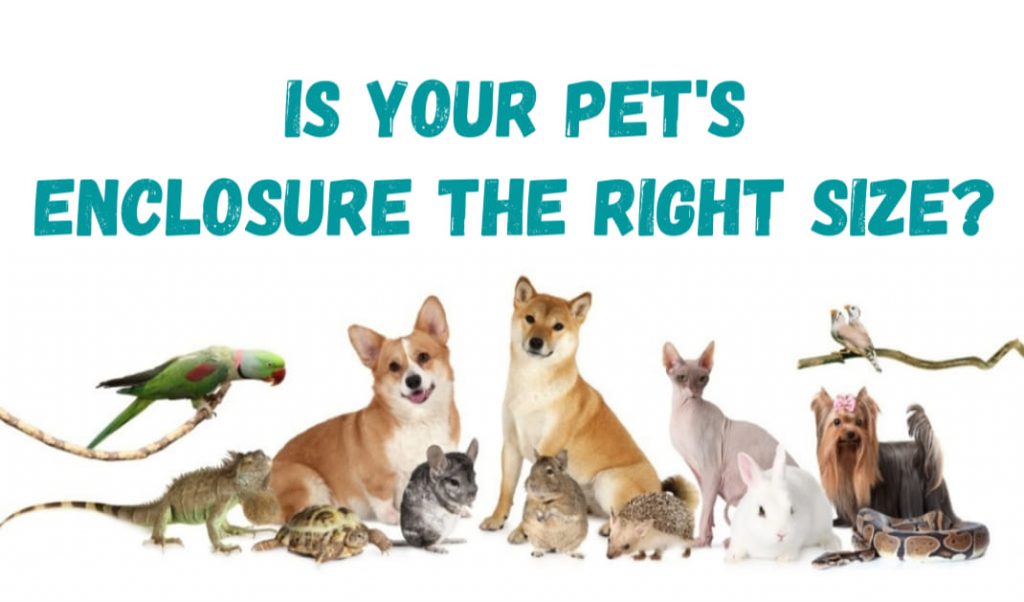
MINIMUM ENCLOSURE SIZE FOR SOME TYPICAL ANIMALS KEPT AS PETS.
Animals are sentient beings and if we want the privilege to share our lives with them, we need to make sure that all their needs are met, including the correct size enclosures and proper enrichment which all animals need. Just because a pet shop or even a vet sells, for example, a cage as an “African Grey cage”, it doesn’t mean it is the right size for them.
The following are general guidelines for the minimum enclosure size required for certain animals, but you should provide the best possible enclosure, more than the minimum, for your pet.

DOG – This will be dependent on the breed, energy levels and the amount of time the owner spends on daily exercise or enrichment. We believe a dog should be able to run comfortably in your yard. A smaller yard might work for certain large breeds, but for example, a Jack Russell (small breed) should never be in a small yard.
CAT –1 bedroom per cat rule.
RABBITS – Always use solid non-wire flooring. The minimum size of the enclosure must be at least 4-6 times the size of the rabbit when they are entirely stretched out, but more if confined to this space most of the day. At least 0.7m² of enclosure space combined with at least 2.2m² of exercise space, for 1-2 rabbits. The smallest space should be big enough for the rabbit to hop across three times and stand without their ears touching the top.
HEDGEHOG – Cage size minimum 120 x 50cm for one hedgehog.
RAT – Solid floor cage of 1 m x 80cm x 60cm.
GUINEA PIG – Cage at least 1m X 1m for one or two Guinea pigs with no more than 2 Guinea pigs per square meter.
CHINCHILLA – They need to be housed in a wire cage with openings no larger than 2.5cm x 5cm that is well ventilated. Use solid floor spacing, but if you use wired floor spacing, the spaces should be less than 1.25cm x 1.25cm as their feet could get stuck in wider spacing. A good size cage is 1m x 80cm x 60cm as they need vertical space as well.
HAMSTERS – Always us solid flooring.
- SYRIAN/TEDDYBEAR HAMSTERS: 5000-7500 cm².
- DWARF HAMSTERS: 4000-5000 cm²
SUGAR GLIDERS – Large and tall aviary-style enclosure with a landing platform and space large enough to glide from one side to another. 80cm wide x 80cm deep x 90cm tall.
PRIMATES
Cage height should be sufficient for all animals to comfortably stand erect and stretch out. Longer-legged or long-tailed species may require more height than other species. For brachiating (swinging) species, the cage height should accommodate and enhance brachiating movement. The minimum height of a cage for smaller species like capuchins, guenons, macaques and even marmosets and tamarins is about 1.8m, for squirrel monkeys the minimum height is about 1.5m.
BIRDS – The bird must be able to fully stretch the wings and flap them without touching the sides of the cage. Correct diameter perches where toes must not fully close around the perch. A general rule of thumb is 2/3 or 3/4 close around perch. Horizontal space is just as important as vertical space. Ideally the cage size must provide enough space to fly from one end to another. Avian welfare expert Dr. Kim Danoff notes, “Depriving birds of flight is mentally and physically stressful.”

READ MORE on holiday day tips for pet owners.
BLUE TONGUE SKINK – 1.2m x 0.5m x 0.5m.
BEARDED DRAGON – 0.9m x 0.4m floor space per single adult.
FRILLED LIZARD/FRILLED DRAGON – 1.2m x 0.6m x 1.2m.
GREEN IGUANA – Need vertical climbing space and size to turn. Size: 1.8m x 0.8m x 1.8m with non-wire surfaces. At least 3 x the size of the Iguana.
LEOPARD GECKO – Aquarium type 40-liter tank for one Gecko, 60-liter tank for a pair, or a minimum 75-liter tank for three or four lizards. Never wired cages.
VEILED CHAMELEON – 2.7 m x 2.7 m x 4m (height).
TORTOISES – 10 x maximum shell length per animal for floor space and 3 x maximum shell length for height. A tortoise shelter should be of an appropriate size for the individual tortoise and large enough for the tortoise to turn around in.
AQUATIC TURTLES – As a minimum, they need enough water to be able to swim without touching the sides or bottom of the tank, or breaking the surface of the water. A good-sized tank allows 80 liters of water per 5 cm of shell length.
FISH – 4 liters of water per 2.5cm of fish and 2.5 cm fish needs 80 square cm of water surface. Wide-bodied fish 2.5 cm of fish needs 129 square cms of water surface area.
SNAKES – A snake needs a vivarium that allows it to fully stretch out. Allow at least a third of the snake’s length for the width and height. For example, a 150 cm long corn snake will need a minimum 150 cm long, 50 cm wide and 50 cm deep vivarium. The minimum cage size is ½ square foot of floor space per foot of snake for those up to six feet in length and ¾ square foot of floor space for those six or nine feet long. Increase the suggested minimum cage size by 25% for each additional snake. Snakes can feel afraid if the enclosure is too large.
TARANTULA – 30 cm x 30 cm x 30 cm. Tree spiders will need a taller tank.
EMPEROR SCORPION – A terrarium of between 30 – 45 cm wide.
READ MORE on what enclosures should include or enrichment.
Remember that you might need a permit to keep some of these animals and requirements may vary between provinces. We do not support the keeping of any animals in cages and especially not wild/exotic animals, but if you have them, make sure you are providing the best care possible with the right size and enclosure set-ups and enrichment.
Next week we will look at a problem we often see in animal welfare and how you can help!
WHEN YOU KNOW BETTER, DO BETTER!
The enclosure size sources come from Critter Rescue, the SPCA and others.